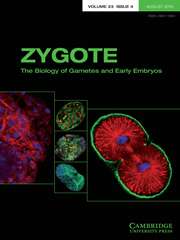No CrossRef data available.
Article contents
Influence of oocyte and sperm parameters on the morphological quality and the aneuploidy status of the ICSI embryos: a mathematical modelling approach
Published online by Cambridge University Press: 19 August 2025
Summary
Recently, mathematical and computational approaches have been incorporated into ICSI interventions as guiding tools. However, those tools carry no prognostic potential. Improving this capability may enhance ICSI attempts and assist clinicians working in infertility clinics. This study, thus aimed to investigate whether parental parameters could have predictive potential for the quality of resulting embryos with the ICSI approach using mathematical modelling techniques. Patient data including follicle number, MI and MII oocyte numbers, sperm number, sperm morphology and motility for 765 distinct couples attending British Cyprus IVF hospital was collected. Furthermore, morphological quality data as well as aneuploidy status for the 4123 resultant embryos were obtained. Regression analyses were conducted to observe the possible correlations between parental parameters and embryo quality and ploidy. Correlation analyses showed that follicle and oocyte numbers, as well as sperm parameters can be indicative of morphological quality of resulting embryos via ICSI (p values < 0.05). On the other hand, aneuploidy prediction remains too complicated to be predicted solely by these parameters (p values > 0.05). This study indicates a predictive potential of infertility measurements for male and female partners on ICSI success and is expected to act as a basis for the development of prognostic softwares to be used in IVF clinics.
Information
- Type
- Research Article
- Information
- Copyright
- © The Author(s), 2025. Published by Cambridge University Press


